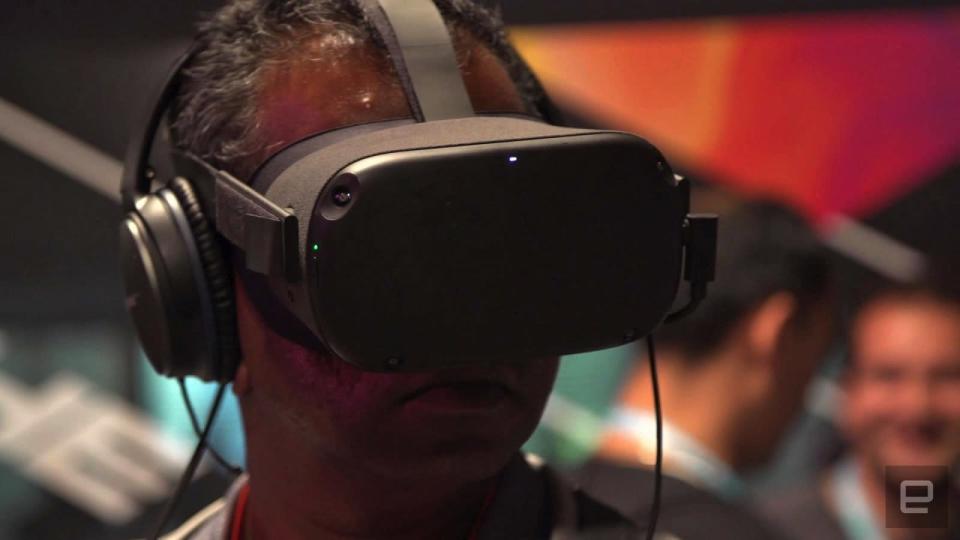Oculus Link hands-on: It really makes the Quest feel like Rift VR
The Quest's killer new feature turns it into a PC VR headset.
There's one common question I've heard from Oculus Quest ($399) owners over the past few months: Why can't I plug it into to my PC? Perhaps that's why Facebook developed Oculus Link, a new feature that'll let its standalone VR headset connect to gaming PCs for more complex games and experiences. On paper, Oculus Link seems like a killer feature, one that practically makes the Rift S irrelevant. And now that I've had some time with a Link-equipped Quest, I'm even more convinced that's true.
Part of the beauty of using the Quest as a PC headset is its sheer simplicity. Plug in a USB-C cable, connect it to your computer and the Oculus Desktop software will recognize it. That's all. There's no need to worry about pairing the controllers with your PC, since that connection is carried over from the Quest itself. On my demo unit, the USB-C cable connected at a right-angle -- likely to place less pressure on the port itself -- and the cable wrapped through a loop on the strap. Oculus said it'll be offering its own Link cables, but there's a good chance third-party USB-C to USB-C cables will work as well (just make sure you're not stressing the port too much).
I was surprised to learn that the Link feature works very differently than a normal PC VR headset. Instead of essentially being another monitor on your PC, the Quest is actually receiving a low-latency video of VR experiences being rendered by your computer. Think of it like a localized version of game streaming services like Google's Stadia. That functionality made me worried at first, since any additional latency can instantly kill the effectiveness of VR. But it turns out, I could barely tell a difference between the Link's VR video feed and a genuine PC headset.

During the opening minutes of Stormland, I kept an eye out for any sort of video artifacting and frame rate slowdowns. But all I saw was a gorgeously constructed virtual jungle and the arms of my injured robot. Walking around the environment and moving my virtual arms felt responsive, with no discernible lag. It wasn no different from my last demo of Stormland on a Rift S. Oculus reps admitted that the refresh rate would be limited to the Quest's maximum of 72Hz, but otherwise, they said the Quest experience should look and feel similar to the Rift S on PCs.
Moving over to Asgard's Wrath, I wandered around a medieval bar, talked to patrons, and drank lots of virtual beer. I paid close attention to detailed scene elements, like a crackling fire, but I didn't notice any video compressions issues there either. I'll admit, neither of my demo experiences were particularly fast-paced games, so there's a chance Oculus Link on the Quest could falter there. And while I wasn't bothered by having a cable tethering me to a PC once again, I'm more used to it than most consumers. Quest owners used to the freedom of the headset's VR capabilities might be more bothered.
While I definitely need more time with Oculus Link to truly stress its capabilities, at this point, it seems to deliver on everything Oculus is promising. It turns the Quest into a Rift, erasing the standalone headset's only major flaw, and making it the most compelling VR option available today.
Follow all the latest news from Oculus Connect 6 here!


